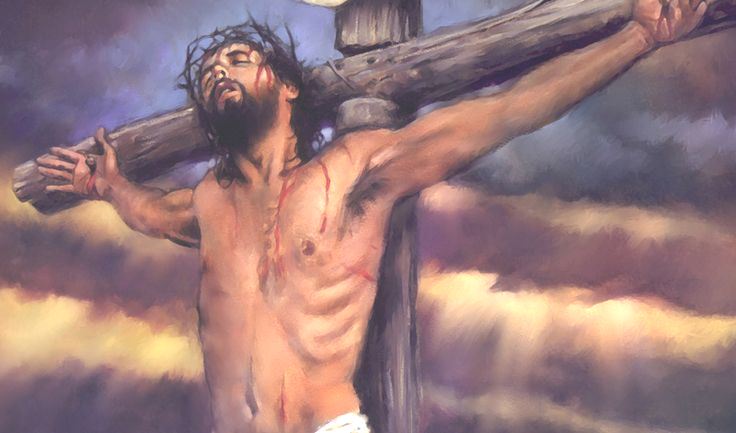The Crucifixion of Jesus is often under looked because people still don’t get the heavy fact that he died only so that we could be alive today. It is very shallow when they say that Jesus was beaten, spit on, mocked, hung on a cross and eventually died.
Have you ever realized what trauma Jesus himself went through? It starts with his triumphant entry to Jerusalem a few days before his Crucifixion. He rode on a donkey, which is seen as a fulfilment in the Old Testament. One powerful thing about Jesus riding on a donkey is that it signified humility. Have you ever asked yourself this question? “Why was the donkey domesticated and the Zebra left to be a wild animal despite its beautiful looks?” This is because the donkey is humble and hardworking. Therefore, Jesus came not for the proud but for the humble, for he was humble. The magical thing about a donkey is that it has a marking on its back; if you look closely at it, you’ll see that the marking on its back is a cross; he came riding on a cross, not to the cross. Jesus knew he wasn’t riding into Jerusalem to be crowned but rather to be crucified.
In the garden of Gethsemane, in Luke 22:44, when Jesus went to pray and sweated drops of blood, this condition is scientifically referred to as hematidrosis; high amounts of mental stress cause it. Jesus himself was depressed when he thought what was about to fall on him, and he kept praying that the cup of tribulation would be taken away from him.
Have you ever realized that all the prayers Jesus prayed were answered except for this particular prayer? I will tell you why. This is because that was the only way to save humanity. There was no other option. Imagine the gruesome death Jesus faced just to be away. Get me right, there was no other way except for that.
Jesus getting “beaten” was him receiving 39 lashes of flogging, which was a form of Roman torture that consisted of cat-o’-nine-tails with multiple pieces of tiny iron balls or bones attached at the end that were designed to rip chunks of flesh when yanked out. He was beaten so severely that his face was torn, his beard was ripped off, and his skeletal muscles, veins and bowels were exposed, causing major blood loss; the Bible says it was hard to identify if he was male or female. Isaiah 52:14
The reason for the 39 lashings was that 40 was the legal maximum in the law of the day; if by chance a person was beaten 40 lashings, it meant that they would die, so Jesus was given the worst possible punishment they would have given out because if they made it 40 Jesus would have died before making it to the cross.
READ ALSO:
Silenced on stage: How Butere Girls ‘Echoes of War’ shook nerve centre of power
Mathew 27:28-30 describes it as they stripped him, then put on a scarlet robe, and then twisted a crown of thorns 2-3 inches deep and cut deeply into his scalp. They put a staff in his right hand, knelt in front of him, and mocked him. “Hail king of the Jews,” they said. They spit on him and used the staff to strike him on the head repeatedly.
He then had to carry a 200-300-pound cross for about 1.5 miles. Just imagine that weight on your shoulders when you squat in the gym and then walk with it on your back for some miles up a hill, and your body completely open. You can imagine what his back looked like. His rib cage was visible on both sides, and his intestines were literally hanging out. He was beaten so severely that he had no more blood to bleed out. He lost about 3.5 litres of his blood until only water poured from his wounds.
Crucifixion at that time was the worst punishment, and only the worst criminals were condemned to be crucified. It was a process meant to instil excruciating pain, creating a slow and agonizing death. To put him on the cross. They used 7-inch nails, one like you see with railroad tracks.
They put them right through his wrists and both feet, piercing through every nerve in those areas, shooting constant nerve pain throughout his arms and feet. There is a tendon in the wrist that extends to the shoulder; the Roman guards knew that when the nails were being hammered into the wrist, that tendon would tear and break, forcing Jesus to use his back muscles to support himself so that he could barely breathe.
Hanging on a cross causes extreme suffocation, and the only way to breathe is to pull yourself up. Jesus did this with thick nails in his wrists, and worse was that his exposed open back muscles and tissues would rub against the splintery wood every time he went up for air, and he did that for 3 hours. Every breath and moment was the most excruciating pain He or anyone in the world could ever feel.
And about the ninth hour, He cried out loud, “Eli, Eli, lama Sabachthani.” This is to say, “My God, My God, why hast thou forsaken me? In Mathew 26:56, His suffering was spiritual, physical and emotional. The cry was interpreted as a moment where Jesus, as one person with two natures, divine and human, experienced a spiritual separation from his father, which resulted from taking upon himself the sins of humanity. It was not spoken in fear but at the expense of bearing every sin of every person to ever live on earth.
Finally, John19:28-30 says, “Jesus knew that his mission was now finished and to fulfil the
scripture, he said,” I am thirsty.” A jar of sour wine was sitting there, so they soaked a sponge in it, put it on a hyssop branch, and held it up to his lips. When Jesus tasted it, he said” it is finished.” Then he bowed his head and gave up his spirit.
The gospel of John continues to explain that after his death, a Roman soldier pierced his side with a spear and blood and water came out. Scientists explain that hypovolemic shock is a form of shock caused by severe hypovolemia (insufficient blood volume or extracellular fluid in the body). It can be caused by severe dehydration or blood loss. The rapid heart rate causes fluid to gather in the sack around the heart. The fluid gathering in the membrane is called pericardial effusion and pleural effusion for the lungs.
After all this, the people still did not believe that he was the son of God, even with the darkness that struck the nation for 3 hours. It was enough for them to confess they did the wrong thing and acknowledge Jesus as the Messiah; how blindfolded were these people? How heartless were they?
Do we really keep close to Jesus when things are going well, when we are being fed, healed, and favoured, but when we are experiencing trials, we leave Jesus alone?
The death and resurrection of Jesus were the greatest events in human history. They were so powerful and magical that they split the calendar of time into years BC and years AD. Just imagine this: When you write the date 2025 anywhere, you acknowledge that Jesus was resurrected 2025 years ago. He conquered death so that I could live today.
Let me, by any chance, get over the fact that God loved me so much that he let his son endure depression, physical abuse, verbal abuse and all kinds of torture so that I couldn’t be separated from him.
Today, God is speaking; he has come to your doorstep. Remember the Thief on the cross. He was reconciled with God just by one sentence of Faith. He didn’t have the time to read the Bible or be baptized, but he only acknowledged Jesus Christ as the one who lives in paradise. Are you willing to dine with Jesus in paradise? He is here for you; it only takes a willing heart.
By Ann Wanjru
You can also follow our social media pages on Twitter: Education News KE and Facebook: Education News Newspaper for timely updates.
>>> Click here to stay up-to-date with trending regional stories
>>> Click here to read more informed opinions on the country’s education landscape
>>> Click here to stay ahead with the latest national news.






